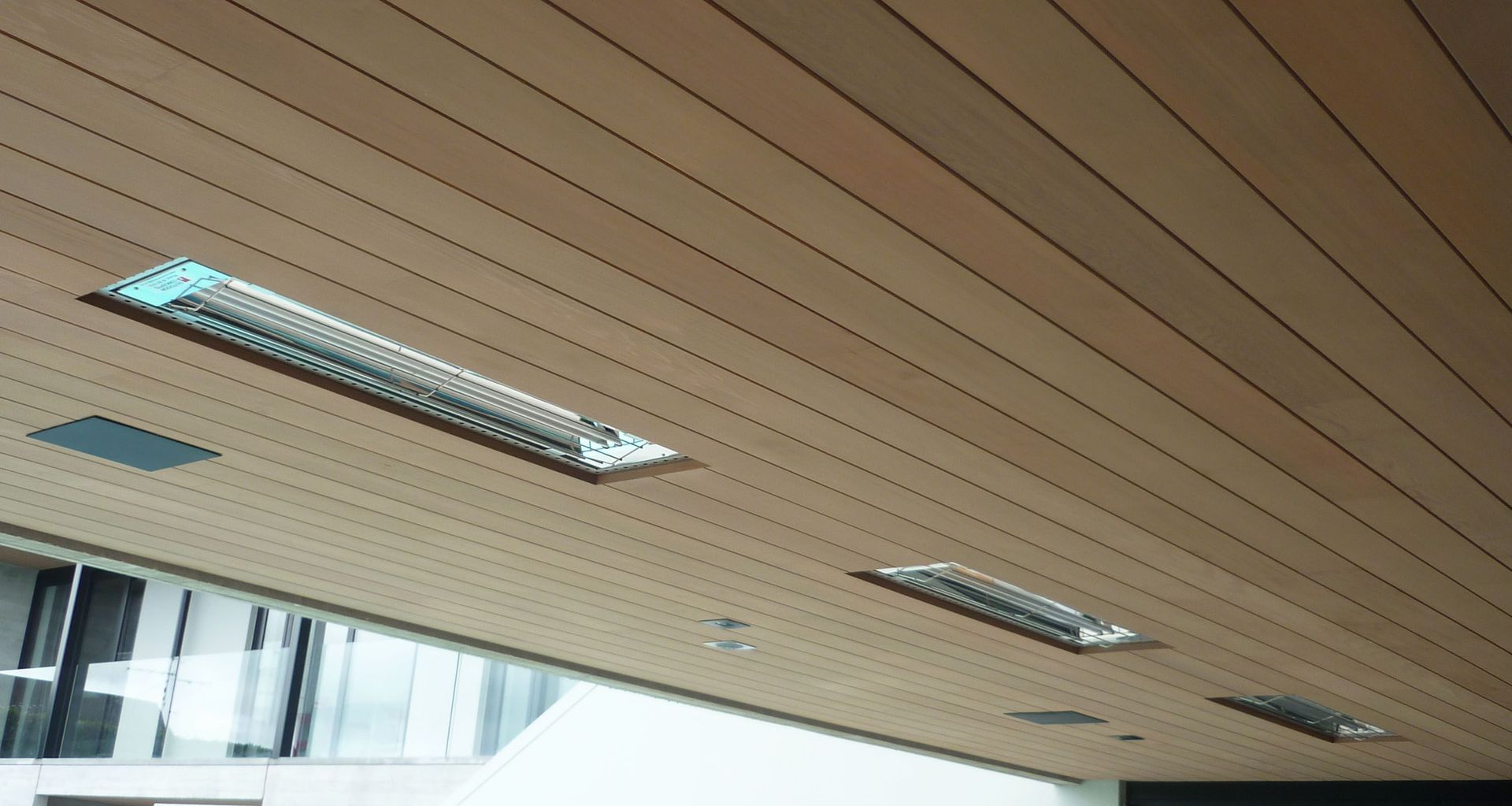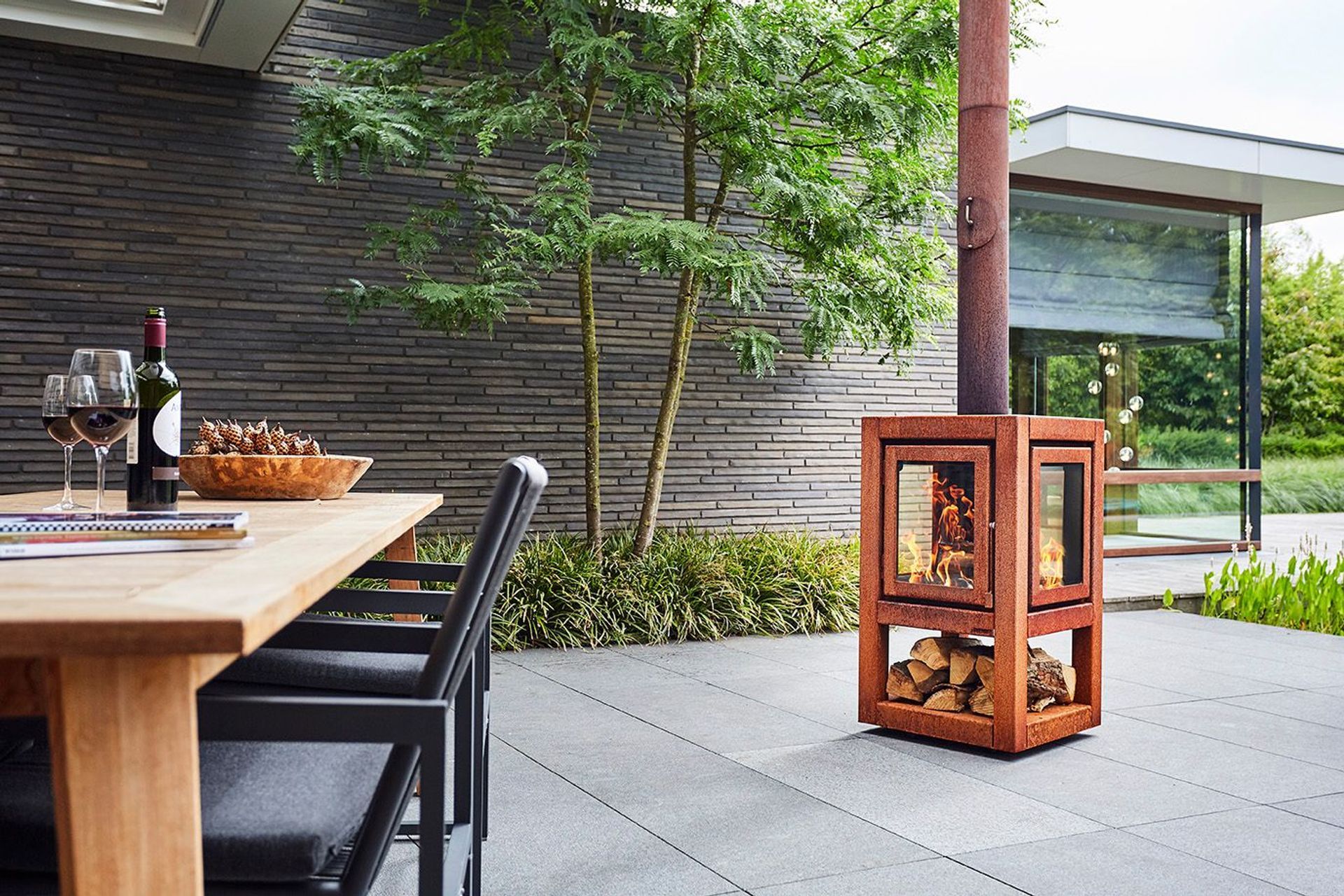Heating outdoor spaces during the colder months
Written by
17 April 2019
•
5 min read

New Zealanders spend a huge amount of money creating beautiful outdoor rooms and spaces that are usable over the winter months, only to find that the heating they've selected is totally ineffective. ArchiPro spoke with James Higgins at Outdoor Concepts to find out what's important when choosing heating products to create the perfect cosy outside areas.
Making outdoor spaces liveable during the winter months is a challenge for any homeowner. It’s a no brainer to realise that outdoor spaces need to be heated efficiently and effectively. However, not all heaters and fires are created equal so it’s important to find the right product for the specific situation to ensure no heat (or money) is wasted.
“There are a lot of popular heaters that look great but are not necessarily going to work in your space – they’re not powerful enough and are sited at the wrong height to create any direct heat,” says James Higgins of Outdoor Concepts, which supplies high-quality products for outdoor living, including heaters, fires, BBQs, grills, lighting and umbrellas.
“There are a lot of misconceptions about electric heaters designed for outside,” he says. “For a start, some people think electric heaters are costly to run but even the most powerful model is cheaper than a gas model. Secondly, ‘radiant’ heaters are exactly the same thing as ‘infrared’ heaters, which confuses people but it’s just a different name.”
“Thirdly, radiant heaters they don’t actually heat the air like a conventional heater; they create radiant heat that warms objects, much like the sun, so they need to be directed within a certain distance of the people they’re keeping warm. This is usually a maximum of 3.5m, although it depends on the model of heater and its output. A wall-mounted heater needs to be more powerful the higher it is mounted off the ground because a low-powered heater will run out of output if it is too far away. So, mounting height is absolutely critical, as is the power output of the heater.”
James says there is a current design trend for houses with clean, flush, recessed details and these require heaters with profiles that suit that look. “We have aesthetically pleasing heaters that supply heat up to 4m off the ground, which is really high for an outdoor heater as most brands only work effectively at around 2.5m off the ground.”
Outdoor Concepts has been supplying a US brand of heaters called Infratech to the New Zealand market for the past 20 years.
Outdoor Concepts has been supplying a US brand of heaters called Infratech to the New Zealand market for the past 20 years. “Infratech is high quality and lasts a long time. There are some brands out there that claim to be outdoor heaters but they deteriorate quickly when sited outside, as they’re made from mild steel so they rust and bubble and the paint falls off. But we’ve had Infratech heaters down at Princes Wharf in Auckland for 17 years now and they’re still going strong. Of course, they are not bulletproof; everything needs maintenance with a regular washdown, especially when situated by the sea, but they are very durable.”
One of Outdoor Concepts’ most popular heaters is the Infratech slimline 4000-watt model in matt black. “This SL40 model features a mixture of sleek aesthetics and high-performing output,” explains James. “It can be recessed into the architecture so it looks really nice and ticks all the boxes for most people.”
James also recommends a lot of the freestanding models “because they are set at the perfect height to create perfect heating,” he says. “Phormalab has an electric heater in either black or white that you can plug in and use straight away – and it works really well.” Designed like a freestanding pendant light in a modern floral design, these Italian indoor and outdoor heaters have become a feature of many leading hospitality outlets, including the terrace of MASU restaurant in Auckland’s Sky City.
However, the wood-burning fire is no doubt the most compelling form of outdoor heating. Known as caveman/woman TV, James says, “Nothing beats the crackle and pop effect of a real fire.” He suggests that the only real issue with outdoor fires is that local by-laws and fire bans can be prohibitive. “These are getting stricter but the bonus of a wood fire is that 90 per cent of them have cooking capabilities – and BBQ-ing over wood is a far more appealing way to cook.”
A number of popular outdoor fires can also be used for cooking, such as the 100/100 by OFYR and the Morsø Forno range of Italian fires, which are shaped like an Italian stone oven and can be used to prepare pizza and bread, as well as being used for smoking fish and slow-cooking dishes.
However, Dutch, Danish and Swedish brands make some of the best fires around, suggests James. “We love their products as they do such a great job of taking the smoke up and away.” One example is the freestanding Quaruba wood stove by RB73, which has a glass door on the front and glass on the three remaining sides.
“It isn’t big and bulky and can be made mobile, with wheels added, so you can move it around. And the quality is great! It is constructed in very-thick Corten steel that naturally rusts on the surface, without actually rusting as such. This functional fire is also like a sculptural piece of art so, when it’s not in use, it still adds to your space – it’s unlike anything else!”
Living life outdoors has never been better.
To find out more about Outdoor Concepts’ extensive range of outdoor heaters and fires, visit here.


